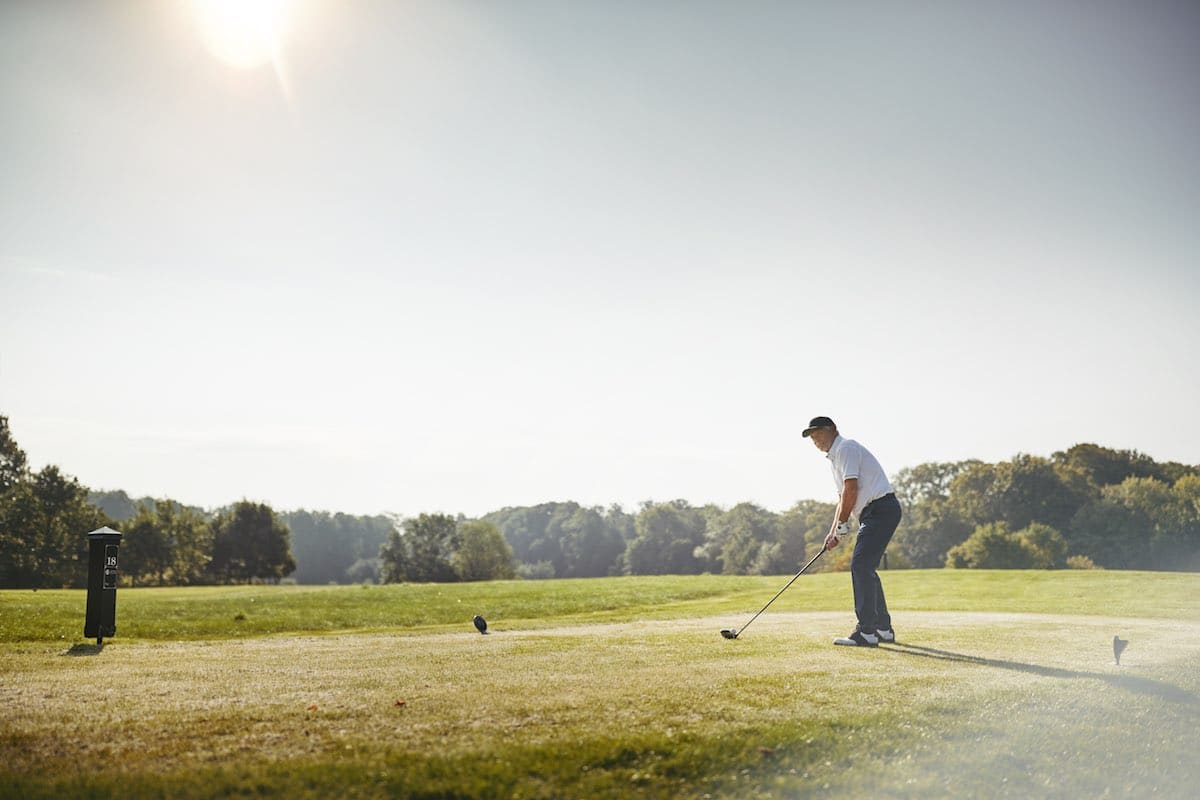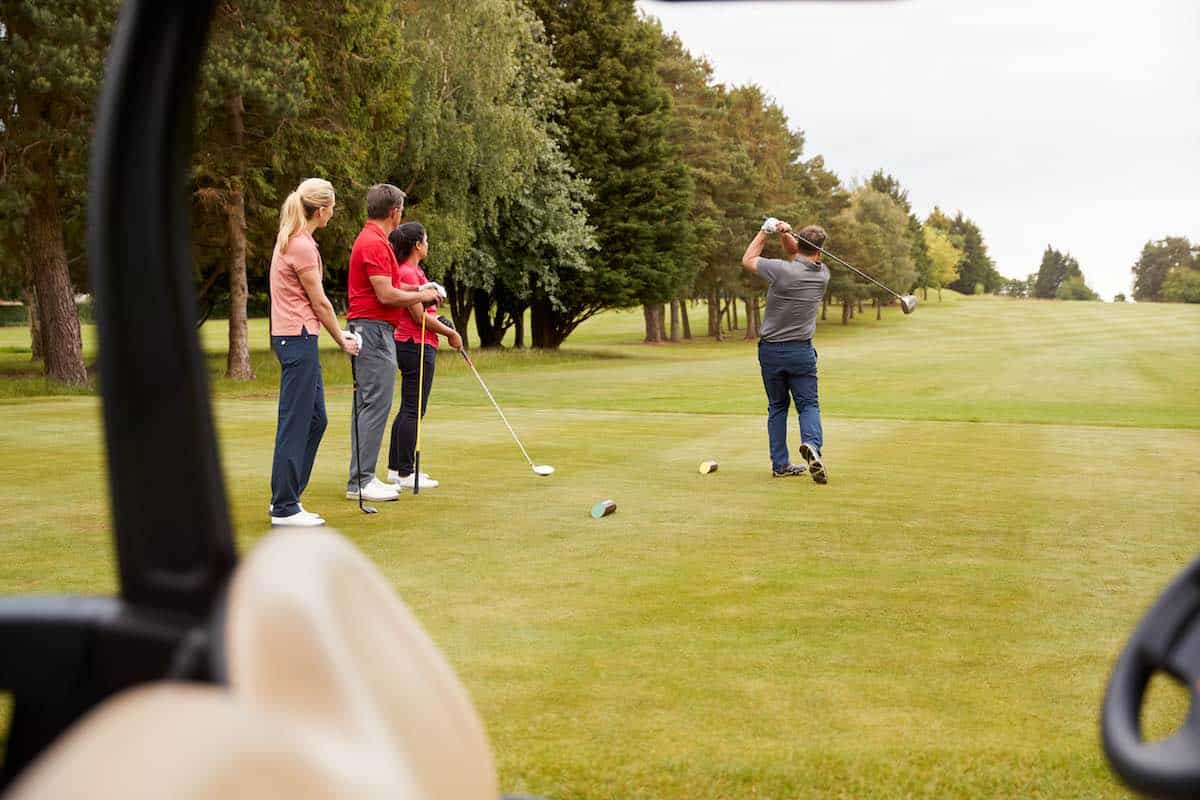Senior tees, also known as forward tees, are designed to offer shorter yardages and make the game more accessible and enjoyable for older players.
What age can you hit from senior tees? Typically, golfers can start hitting from senior tees at the age of 55 or older. However, the exact age may vary depending on the specific golf course’s rules or the governing body of a particular tournament or league. Golfers can also choose to play from the senior tees or forward tees with the new index system.
Read on to learn everything about the senior tee box rules, the age requirements, and the advantages of using the senior tee boxes.
The Golf Senior Tee Box Rules

Golf has a longstanding tradition of embracing players of all ages, and the senior tee box rules play a significant role in ensuring that the game remains accessible and enjoyable for older players. As with many aspects of golf, the guidelines for the senior tee box can vary by region, course, and tournament. However, some general principles are widely accepted.
Senior Tees Age and Eligibility
The primary factor that determines eligibility for the senior tees is age. Most golf courses and organizations typically allow golfers to use senior tees once they turn 55. However, some clubs or tournaments might have a higher age threshold, such as 70 years. Before you hit the links, it’s a good idea to familiarize yourself with the specific rules of your chosen venue.
Course-Specific Criteria
Each golf course might have its distinct set of rules for the senior tees. For instance, while one club might strictly adhere to age as the only criterion, another might also factor in a player’s handicap. Always consult the local rules or speak to the club professionals. For detailed regulations, the USGA’s official website provides a comprehensive breakdown of course-specific rules and recommendations.
Tournament and League Play
You might find some additional rules and stipulations when engaging in competitive play. Many clubs and tournaments might require proof of age, a specific handicap threshold, or even residency in certain cases. It’s always best to be prepared.
Flexibility in Modern Golf
The new system allows the golfer to choose from which tee box he wishes to play, on any given day.
With the introduction of new index systems and evolving golf technologies, players now have more flexibility in choosing which tees they play from, provided they fit the necessary criteria. It’s a dynamic shift that makes the game more inclusive. The R&A provides insights into the modern adaptations in golf rules, ensuring players remain updated.
Navigating the golf senior tee box rules doesn’t have to be complicated. By staying informed and consulting authoritative sources, you can ensure that you make the most of your time on the course. Remember, golf is a game of integrity and respect, and understanding its rules is part and parcel of preserving its rich traditions while embracing its future.
Further reading: At What Age Do Golfers Play From The Senior Tee?
Advantages of The Senior Tee Box

Golf is a game that evolves with each player, adapting to their skills and abilities. One of the features ensuring this adaptability is the senior tee box, specifically designed for older golfers. Here, we’ll delve into its many advantages.
Leveling the Playing Field
Throughout my years as a golf coach, I’ve witnessed firsthand the drive and determination of senior golfers. However, just as with any sport, age can sometimes result in a diminished driving distance. The senior tee box, positioned a tad closer to the hole, compensates for this. I remember one particular senior student of mine, Mr. Thompson, who had been struggling with his drive for a while. The senior tee box breathed new life into his game, keeping him competitive and passionate about the sport.
Reducing Potential Frustration
Over time, certain physical abilities might wane. It’s a natural process. The senior tee box acknowledges this transition. It ensures that golf remains a source of joy and engagement rather than becoming a frustrating challenge. This adaptability is one of the sport’s most cherished aspects.
Enhancing the Pace of Play
Faster rounds often result from the senior tee box’s design. By shortening the length of holes, games become more streamlined and efficient. Pro senior golfers like the legendary Bernhard Langer have mastered this efficiency. Their rapid play and sharp tactics often awe the crowd and younger players.
Emphasizing Strategy Over Strength
With the senior tee box’s introduction, golf subtly focuses more on course strategy rather than sheer power. This adjustment offers a refreshing challenge, emphasizing the sport’s cerebral nature. I’ve seen many senior players, just like Mr. Thompson, rediscover their love for golf when they started prioritizing strategy over pure strength.
Encouraging Flexibility and Adaptability
Above all, golf is an inclusive sport. The senior tee box is a testament to that fact, inviting players of varying ages and skills to participate in the game and adapt according to their evolving capabilities.
Prioritizing Enjoyment
Golf’s ultimate goal is to ensure enjoyment, and the senior tee box fits right into that mission. Whether for sport, camaraderie, or the love of nature, this particular feature makes sure the game remains as enjoyable as ever.
How Does The Golf Index Chart Affect Your Ability To Play The Senior Tees?
Every golf course has its index chart based on the new slope system of that particular course.
Without going into too much complex detail, and in simple terms, the slope is influenced by the difficulty and length of the course.
The wind is also factored into this equation.
When you arrive to play your round, you will determine your handicap for that day, by your choice of the tee box, such as playing the senior tee box.
Match your index with the color tee box on the chart, and you have your handicap for the day.
One golden rule is that you may not change from one color tee box to another color during your round.
Read more about golf handicaps in our beginners’ guide.
Final Thoughts
A few specific rules apply when you play off the forward or senior tee box; I have covered them in this article.
It has now become common practice for the tee boxes to be renamed: back, middle, and front.
The main purpose is to encourage golfers to move to the tee that matches their ability without stigmatism.
This move will also speed up play.
In any round of golf, the same rules apply to all golfers, irrespective of the tee box they elect to play.
Tee Box Etiquette

To those of you who are fairly new to the game of golf, here is a list that I have compiled of the can-do and can-not-do on the tee box.
Do’s
- Allow the winners or the player that scored the lowest score (medal) on the previous hole, to move onto the tee box first.
- The player who is about to play his tee shot “ owns” the tee box.
- Always stand on the ball side of the player when he is addressing the ball.
- Keep quiet when the player is at address.
- Stand still.
- Watch your shadow.
Don’ts
- Stand behind a player about to tee off.
- Move or shuffle your feet.
- Stand too close.
- Fiddle with coins or pegs in your pocket. ( this is called Gamesmanship)
- Sneeze, cough, or blow your nose.
- Drop a ball or peg when the player is at address.
- Whisper or talk.
- Make comments about the player’s setup, stance, or swing.
These may sound trivial, simple, or a “bit over the top,” but you do not want to be rebuked by a fastidious player about his game and life in general.
Etiquette: Slow Play
No golfer should ever forget the importance of etiquette on the course.
Golf is time-consuming; unfortunately, the speed of play on the course is the number one concern worldwide.
- Always consider your fellow golfers behind you and try to keep up with the covey in front of you.
- Sure, assisting your partner in looking for his ball in the rough is polite, but make sure you know where your ball is.
- Walk up between shots and even play “ready golf,” especially if you have a slow player in your covey.
- Enjoy every round you play.
Nick is the founder of GolfSpan and an avid golfer. He's not quite a pro but has over 15 years of experience playing and coaching golfers worldwide. His mission is to bring the golfing community a better experience when it comes to choosing the right golf gear and finding the right setup for your game.






